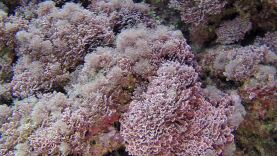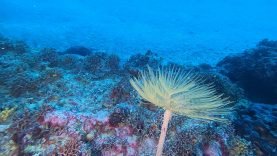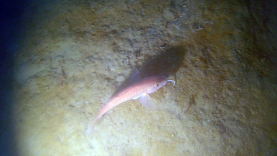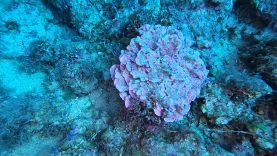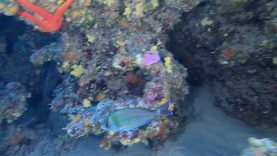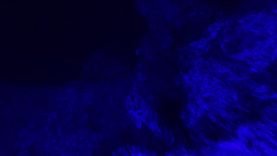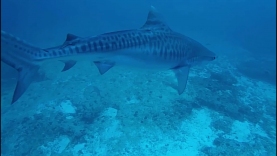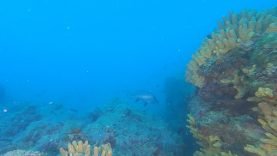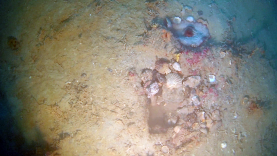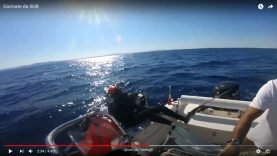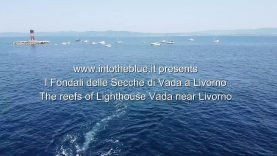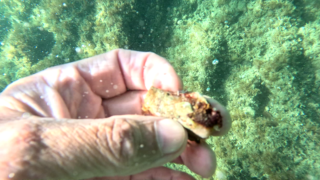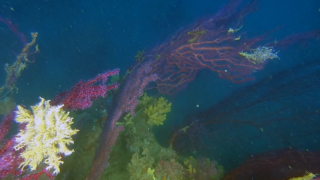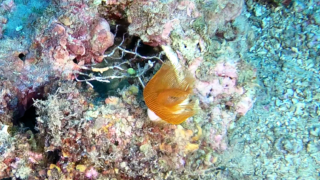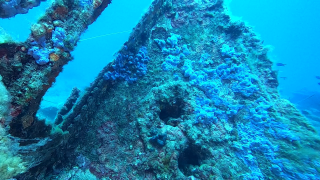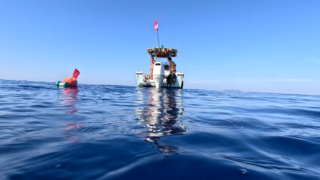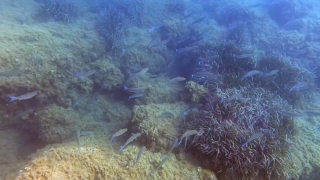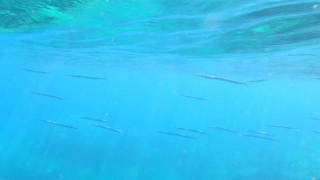The reefs of Lighthouse Vada near Livorno
Area of particular interest for its very beautiful reefs and naturalistic value which, in addition to the practice of small fishing, has always been a destination for divers from all over Tuscany and many northern regions. The area known as “Shoals of Vada” actually includes a very large marine area in front of the coast that goes from Cecina to Castiglioncello. It is several square kilometers with the famous “lighthouse of Vada” in the center necessary to report the risks related to navigation due to the shoal water. Below the surface of the sea there is an exuberant life that develops in three dimensions, full of countless living beings so different from each other. The interest in observation leads us to appreciate a wonderful aquatic life, both animal and plant, present at all depths. Its extension is several miles and varies in depth; from a few meters where the lighthouse is located to -50 / -55 in the deepest areas, up to -80 meters of some cliffs outside the shoal. i fondali delle secche di vada a livorno
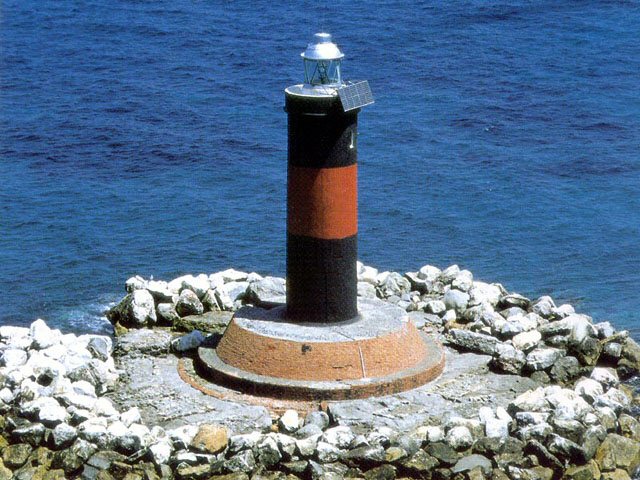
This itinerary develops in the area called ” Shoals of Vada” because it faces the coast of Vada, a locality in the Municipality of Rosignano M.mo, in the Province of Livorno (Italia), and which surrounds the homonymous Lighthouse of Vada, the “Headlight” for the inhabitants the local fishermen. i fondali delle secche di vada a livorno
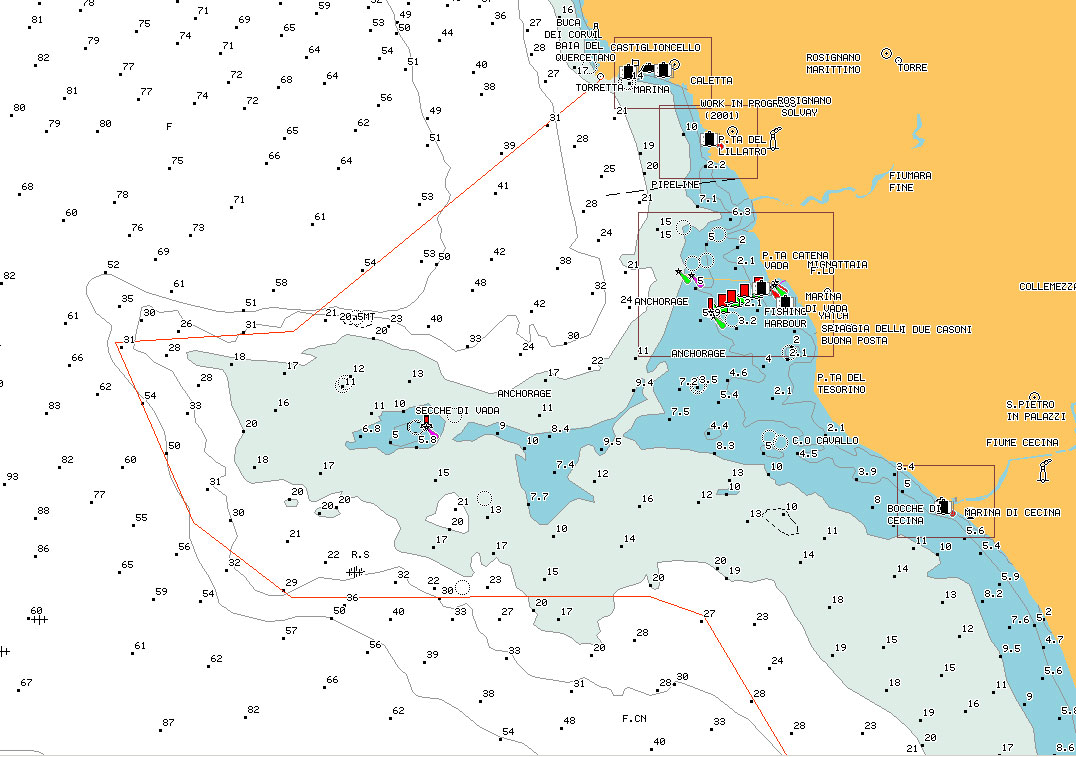
To dive in this area it is necessary to be able to count on a “support boat”, better if enabled beyond 6 miles from the coast. In the large area around the lighthouse you can also simply go apnea or snorkeling; but in order to fully enjoy the wonderful spectacle that the seabed offers us, we must use self-contained underwater breathing apparatus for scuba diving allow autonomy for even demanding dives. The seabed offers various depths up to over –50 or –55 meters.

It is important to pay attention to the climatic conditions and, of course, to have common sense; in fact, both immersion and emergence could be difficult and risky. Moreover, a cause of the muddy bottom in a good part of the shoal and of the submerged currents, it is not uncommon to find water with little visibility and therefore prudence must push us to the utmost attention and concentration. The various areas of the shoal are classified as shown below, each with its own peculiarities and characteristics even if they are all connected to each other except for brief interruptions. There are also reefs adjacent to the shoals which are located at depths between 80 meters and 130 meters. In the areas closest to the surface we find the Posidonia oceanica prairie and the shallow submerged reefs with an interesting marine biology with many animal and plant organisms. i fondali delle secche di vada a livorno
Puntaccia reef
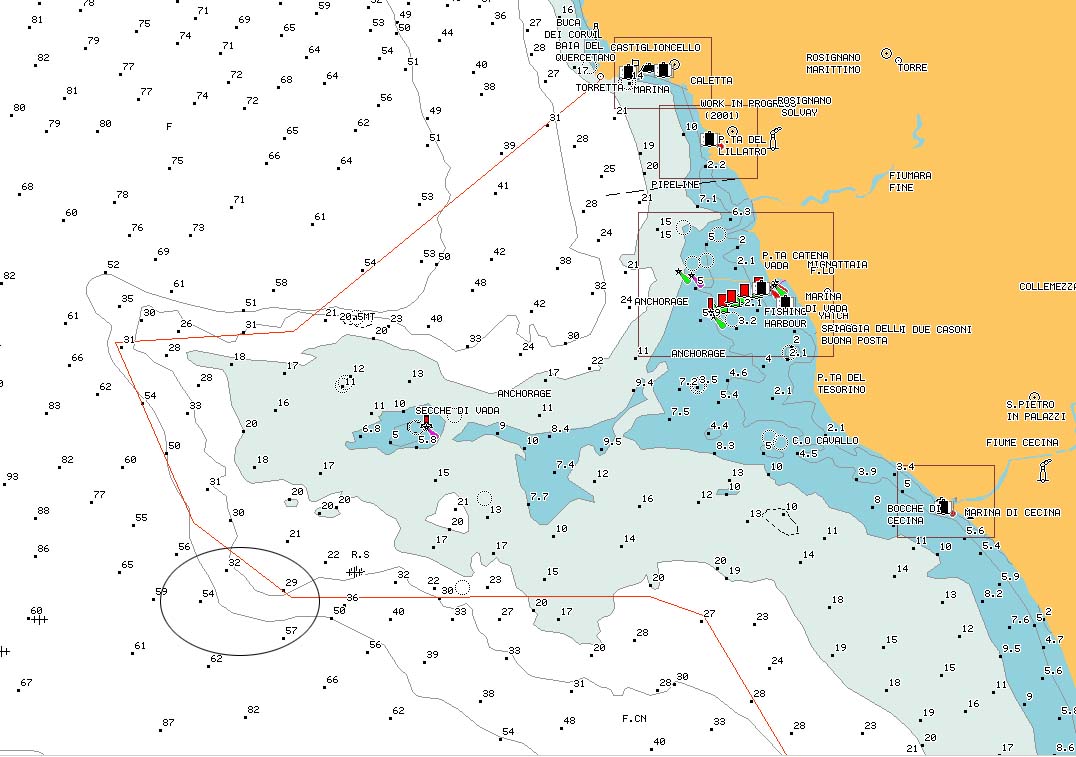
It is a cliff with an arc of a circle that is interrupted at times on a seabed that varies from -46 to -52 meters in depth. Area with precious coral, corallium rubrum, in the past has been exploited by professionals diving for several years. It is full of life perhaps thanks to the particularly muddy seabed containing nutrients for marine life, consequently a slight current is enough to have little visibility. In fact, it is quite rare to find clear water but when it happens the show is truly impressive; colonies of large gorgonians can be found in addition to what is present on the other bottoms of the shoal.
The reef external promontory “Sperone”
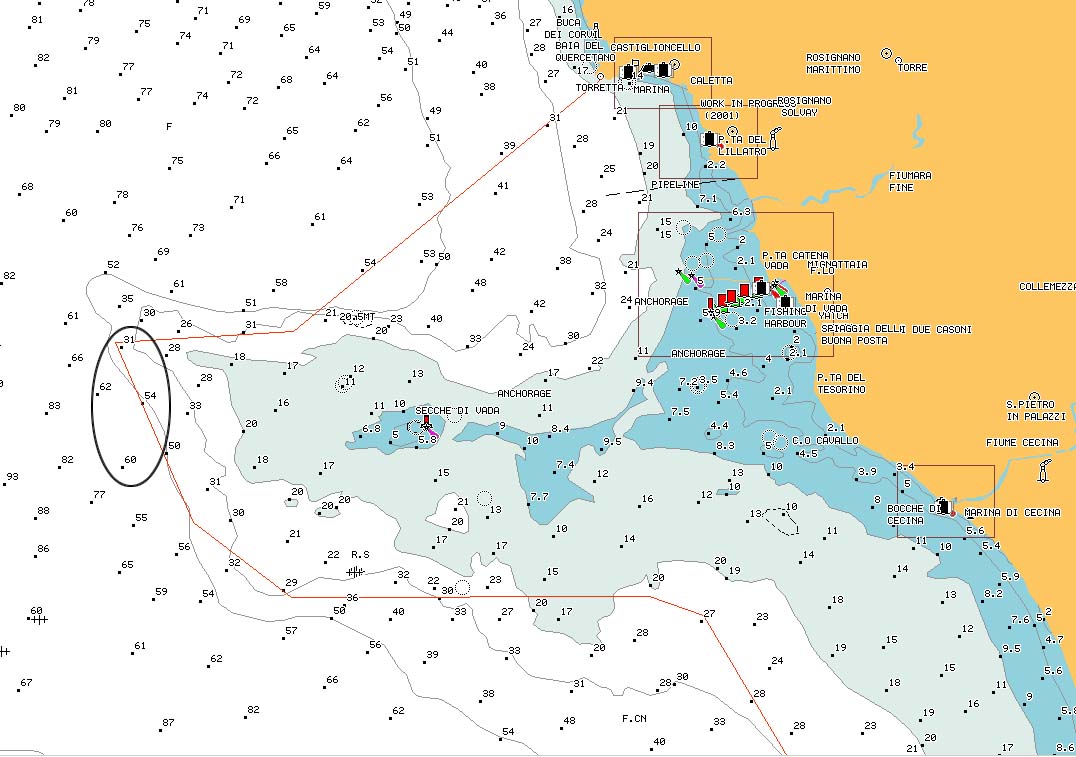
It is the reef oriented parallel to the coast and facing the open sea, several miles long, with depths ranging from -39 / -45 / -52; similar in characteristics to the reef internal promontory “Sperone” as it is a continuity. The seabed is varied between muddy and sandy areas. The reef external promontory “Sperone” is characterized, however, in addition to the marine life present in the other reef, for the possibility of making “special” encounters, in fact in August it is not difficult to meet amberjacks, the Mediterranean bluefin tuna and even groups of dolphins that that go towards Liguria.
The reef promontory “Sperone”

It is the area where the reef curves to return to the coast. The depth varies between -34 /-36 /-42 /-48 and the seabed is mainly made up of sand. The rock is very compact and consequently it is one of the areas where the water is normally clear. In this area it is easy to meet, as in to the reef external promontory “Sperone”, the large passing pelagics and the groupers in their reproductive period. Of course, it is also the ideal habitat for dentex, sea breams etc.
The reef internal promontory “Sperone”

The reef is oriented perpendicular to the coast and facing it for a length of a few miles. The depths vary at –36 and –48 meters. The rock is covered with varied forms of life ranging from red coral to various species of sponges, from spirographs to nudibranchs and shells of different shapes and sizes, to different sea urchins. Naturally, cataloging the various and numerous species of life present in the shallows of Vada is difficult in this short itinerary. As for the spur, the fish that can be easily found are groupers, bream, brown meagre, phycis phycis, european conger, moray eels, common dentex and also pelagics such as atlantic bonito, not infrequently you can spot ocean sunfish and of course crustaceans are not lacking too. Unfortunately there is significant exploitation by local fishermen.
The reef “Muraglione”
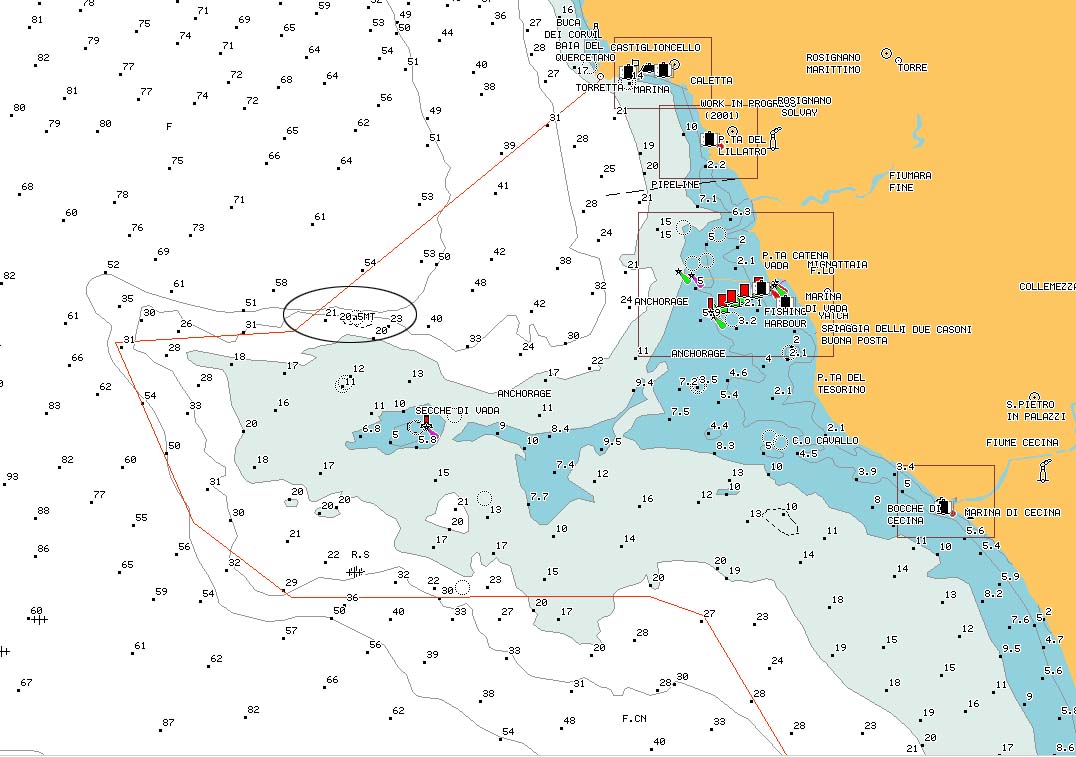
It is a reef that from -22 can reach -48. It is an ideal area for all divers, both for beginners and for the more experienced. The danger is due to the fact that the reef is a wall, or almost, it is necessary for the less experienced be careful because it is very easy to find a depth for which you are not qualified.
The reef “Marmi”
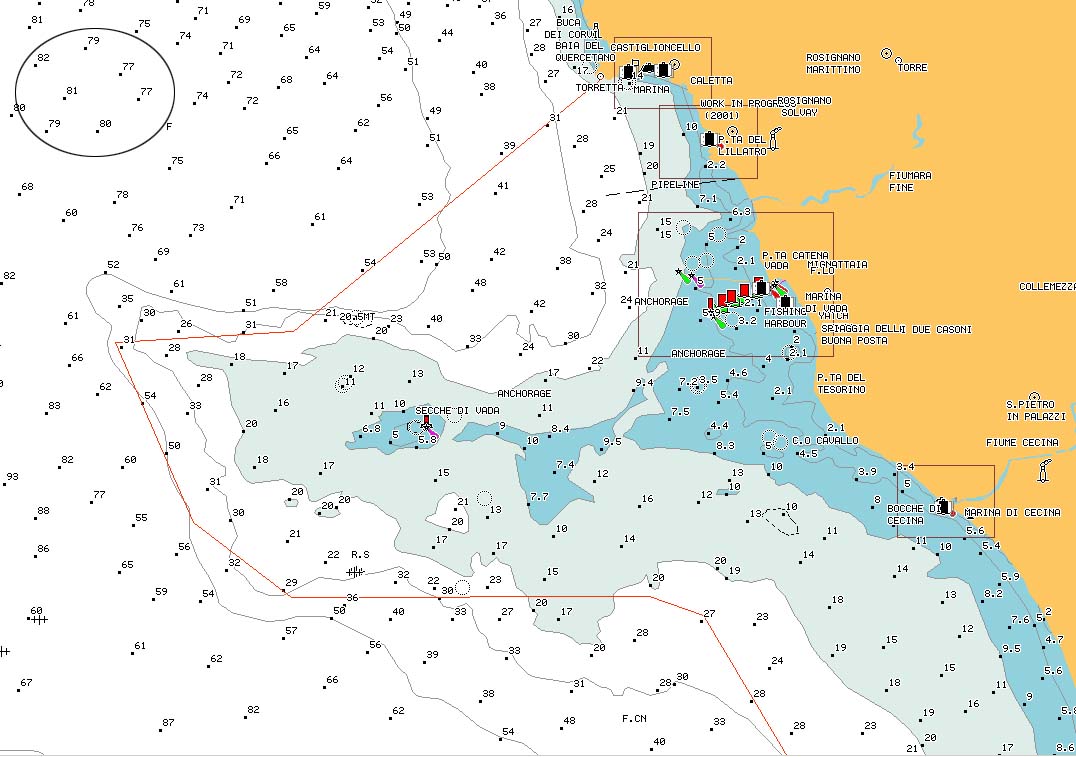
The rocks present can reach up to -80 meters deep and of course the dive must take place with air mixtures suitable for this purpose and by divers with considerable experience. The muddy seabed of white or almost white color does not often allow good visibility, sometimes the visibility is reduced to below one meter and diving, if not supported by valid reasons, is not recommended because in the end the disappointment does not compensate for the enthusiasm for entering the water. On the rocky bottom there are mainly crustaceans and some small coral branches. Life is less exuberant than on other reef.
The reef “Ciglio di terra”
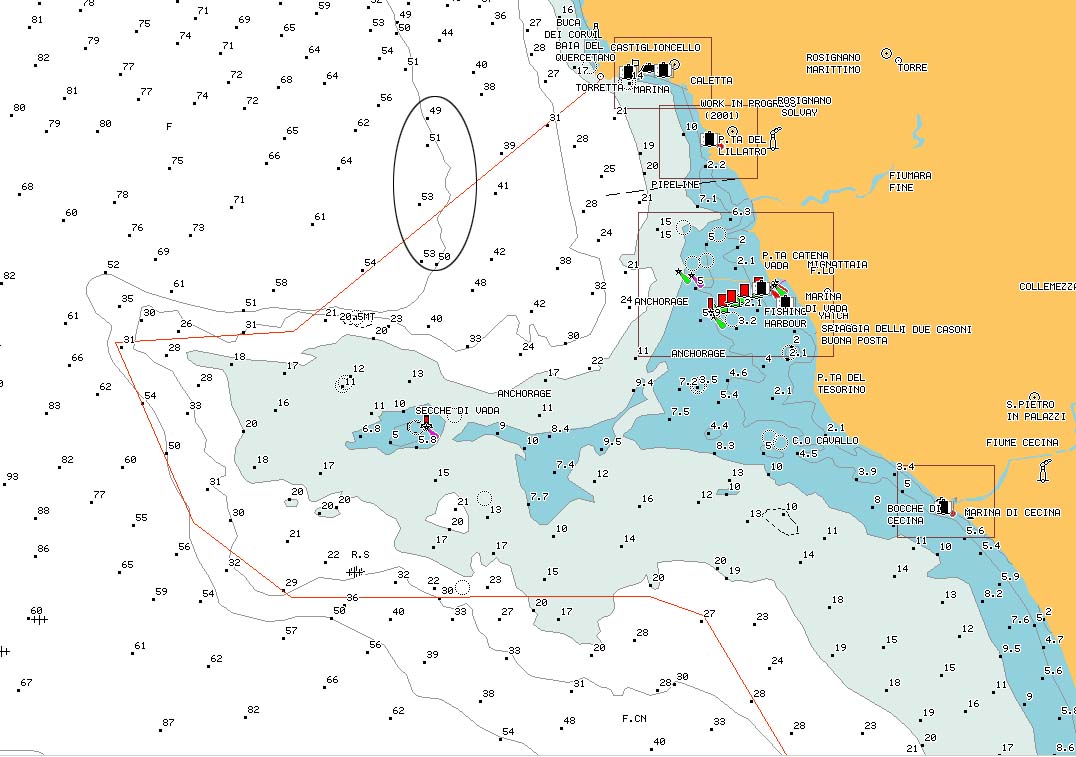
It is a cliff close to the ground, hence its name, which varies in depth from -34 / -36 to -42 / -46 with peaks up to -48, it is very easy to come across points where there are really red gorgonians very beautiful as well as of considerable size; we report the presence of sponges of various kinds and the red coral typical of the area. The typicality of this coral, which makes it unique, is given by the particularly intense hue to the point of being identified, as a commonplace, as the “pigeon blood coral”. Many years ago there was a exploitation, by local coral workers.. Coral is currently present in abundance throughout the area, but has no commercial value due to the previous exploitation, however it represents a singular trophy for underwater photographers.
The presence in this area of a large chemical industry, with its discharges into the sea, is leading to the death a once very thriving reef.
Unfortunately, however, even in the shallows of Vada we are progressively witnessing tropicalization phenomena: the increase in water temperature allowed the presence of some fish that normally live in lower latitudes, or that come from the Red Sea through the Suez Canal, such the barracuda, scorpion fish, triggerfish, ecc.
At the end of each dive we feel gratified by this experience and the pleasure we experience never finds the right words to convey our beautiful sensations to others.
(Fanino Cirivasi)

